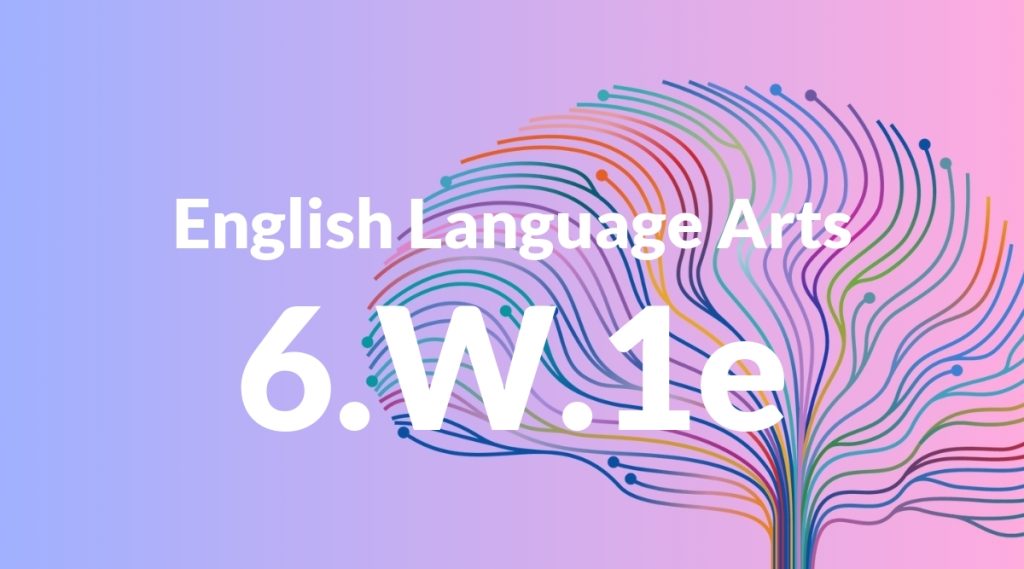Standard: 6.W.1e – Provide a concluding statement or section that follows from the argument presented.
Grade level: Grade 6
Subject: English Language Arts
Domain: Writing
Teacher Overview
This standard emphasizes the importance of providing a strong conclusion that follows logically from the argument presented. It helps students learn how to effectively wrap up their writing, ensuring that their arguments are clear and leave a lasting impact on the reader. Before tackling this standard, students should be able to construct coherent arguments and write clear introductory and body paragraphs. They should also understand the basic structure of an essay.
After mastering this standard, students will be able to write more refined and impactful essays, using conclusions to effectively summarize and synthesize their arguments.
Common Misconception 1
A common misconception is that the conclusion is just a restatement of the introduction. This is incorrect because a conclusion should not only summarize the main points but also provide a final insight or call to action that enhances the argument.
Intervention 1
To address this misconception, provide examples of strong conclusions that offer new insights or calls to action, and practice writing conclusions that add value to the argument.
Common Misconception 2
Another misconception is that a strong body makes a conclusion unnecessary. This is incorrect because the conclusion integrates the entire argument, reinforcing the main points and leaving a lasting impression on the reader.
Intervention 2
Use writing exercises that focus on crafting impactful conclusions, and highlight the role of the conclusion in reinforcing the overall argument and providing closure.
Prerequisite Knowledge
Students should understand how to construct a basic argument and have experience with writing introductory and body paragraphs. They should also be familiar with the purpose of a conclusion in writing.
Subsequent Knowledge
Students will develop skills in refining their writing for clarity and impact, learn to use more sophisticated transitions, and understand how to effectively summarize and synthesize information in their conclusions.
Instructional Activities
- Analyzing examples of strong and weak conclusions
- Writing multiple conclusions for a single essay and discussing their effectiveness
- Peer-reviewing each other’s conclusions
- Using graphic organizers to plan conclusions
- Practicing writing conclusions for different types of writing




